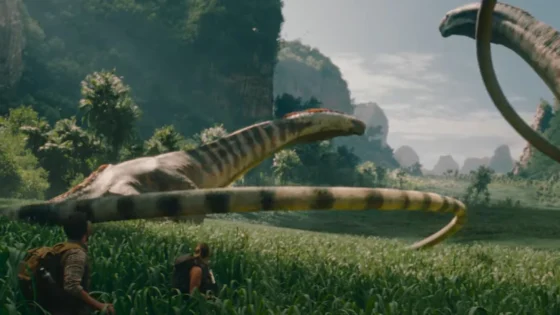Acclaimed director Shion Sono was still fresh off the debut of Guilty Of Romance which made a huge splash at Cannes but only four months later, he gave us an adaptation of Minoru Furuya’s psychological thriller manga Himizu, a twisted tale of a middle-school boy’s state of mind and how he deals with stressful situations. Originally conceived as a straightforward adaptation, Sono altered the script to include the aftermath of the 2010 earthquake and tsunami that devastated Japan and set out to the very core of the areas which suffered the worst. There he shot several scenes amidst the devastation left behind, and the result is heartfelt. The decision to present the characters against the backdrop of the catastrophe makes for a far more relevant and emotionally resonant feature.
Despite the many storylines Sion Sono corkscrews his many subplots with ease. You’ll discover a half dozen eccentric characters and a half dozen subplots including a pickpocket thief on the verge of a big score, an extremely bleak coming-of-age story, a twisted teenage romance, a Yakuza gang out for money, a neo-Nazi drug dealer, a whorish mom, a bastard of a dad, a public massacre, some sadomasochistic neighbours and a mother who desperately insists her daughter commit suicide. The description hints at a dark fairy tale, but Himizu is sugarcoated with hope, and at the forefront of it all is a group of good-hearted souls who try their best to do good in the face of any threat. Sono directs an inspirational film that encourages the Japanese youth to “never give up” and reminds them that it’s important to have aspirations in life.
With Himizu, Sono effortlessly juxtaposes scenes of stylized violence against the heart wrenching disaster-ridden landscapes, the tragic family drama, and a bittersweet high school crush. Cinematographer Sohei Tanikawa, using a Red camera, demonstrates his talent by constructing long tracking shots set against the wasteland and under the constant, endless rain. The soundtrack which mostly consists of classical pieces such as Mozart’s “Requiem” and Barber‘s “Adagio For Strings” repeats throughout while the sound design cuts at the ears like a razor, amplifying the pic with surprising immediacy. Unfortunately, by the third act, Sono struggles to find a coherent tone, and the extreme tonal shifts sometimes make the pic feel like two movies crammed into one, but regardless of its missteps, Himizu spotlights some of the director’s best work. There is enough here for a 20-minute highlight reel. The opening montage of the post-tsunami ruins is extremely moving. Later, a shootout between our protagonist and the Yakuza recalls the best of Tarantino, and a first-rate Hitchcockian murder sequence will leave you flabbergasted. The crane shot alone is worth the price of admission.
With Himizu, Sono’s brilliance is to take the onslaught of all the high-pitched comedy and hyperbolic fury and shape it into a narrative that’s surprisingly touching. The title translates as “mole,” and Sono uses this to convey his message: Like a mole, his protagonist overcomes, no matter how muddy the outlook may be: “never give up.”
Ricky D

































